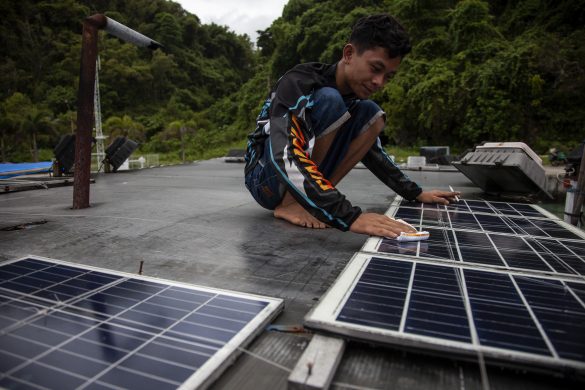I intet andet land spiser folk flere ferskvandsfisk end i Cambodja, men en lang række planlagte dæmninger i Mekong-flodens bækken vil forhindre fiskenes vandringer – naboerne Thailand og Vietnam har imidlertid brug for el-kraften.
PHNOM PENH, 28 July 2014 (IRIN): The planned construction of 88 hydroelectric dams in the lower Mekong basin by 2030 will cause food security challenges in Cambodia, experts say.
“Cambodia is going to pay the highest price for dam development basin-wide, to the point of affecting the food security of its 80 percent rural population,” Eric Baran, a specialist with the WorldFish Centre, an international research NGO based in Phnom Penh, told IRIN.
“Worldwide, there is no bigger consumer of freshwater fish than Cambodia, noted he.”
By 2030, multi-national developers plan to construct 11 dams on the Mekong river mainstream, and 77 dams on its tributaries (bifloder), in an effort to meet the growing demand for electricity in Cambodia, Burma, China, Laos, Thailand, and Vietnam.
Huge need for electricity
Electricity demand is already intense, and growing.
According to a 2010 hydropower assessment report commissioned by the Mekong River Commission (MRC) – an inter-governmental agency shared by Cambodia, Laos, Thailand and Vietnam – Vietnam and Thailand account for the majority of electricity consumption today.
And these two countries alone will account for 96 percent of power demand in the Lower Mekong Basin (which consists of Laos, Thailand, Cambodia and Vietnam) by 2025.
With its fish-heavy diet, Cambodia will feel the crunch of the dams as water courses change and fish migration routes are blocked. Attempts to change agricultural practices and diets (kostvaner) face major challenges in the fish-dependent country.
A 2013 study led by Cambodia’s Ministry of Fisheries showed that Cambodians eat on average 173 grams of fish per day; the world’s average is five grams.
Consumption could drop to 80 grams per person per day by 2030, the report argued, due to the construction of the dams.
The Cambodian Fisheries Administration acknowledges that due to mainstream dam development alone, the country could lose up to 42 percent of its freshwater fish by 2030 compared to the national yield in 2000.
This is a drastic dip in a country where nearly a fifth of the population, according to government data, lives below the food poverty line of 70,000 riels (17 US dollar = 92 DKR) per month.
The Tonle Sap example
Activists say the impact of the planned dams will be felt strongly in northeast Cambodia’s Tonle Sap Lake, the largest lake in Southeast Asia and home to the most productive inland fishery in the world.
At a July 2014 event, Agriculture, Forestry and Fisheries Minister Ouk Rabun told reporters the country takes approximately 528,000 tons of fish from freshwater fisheries.
Tonle Sap yields around 300,000 tons of fish per year – more than 40 percent annual national production – and underpins the local economy. According toWorldFish, 1.5 million people make 95 percent of their income directly from the lake.
“The lake’s fish do not only feed those around it. We estimate that six million people depend on it for employment [as fishermen and fish sellers] as well,” explained Youk Senglong, a programme manager for the Fisheries Action Coalition Team (FACT), an NGO based in Phnom Penh.
According to the 2010 MRC assessment, at least 39 percent of the fish caught in the Mekong Basin are migratory, amounting to up to 34 tons caught per hour during the annual migration peak (June to October) in the Tonle Sap river alone.
When the Mekong runs low, the Tonle Sap acts as tributary, meaning water flows from the lake and river into the Mekong. When the Mekong floods, the flow reverses.
Adding a dam in this situation creates a physical obstacle to fish trying to migrate in either direction.
“Any migration blockage affecting the Mekong will affect the activity on the lake,” Senglong explained, adding:
“It will also have impact elsewhere in Cambodia simply because of the changes in water flow”.
Making up the shortfall
Læs videre på
http://www.irinnews.org/report/100413/planned-dams-threaten-cambodia-s-food-security














